How To Fix a Loose Axe Head? Working with an axe with a loose head is the definition of the word “dangerous.”
When you lift the axe to cut, the loosehead will most likely fall off, and it could hit you.
Nobody wants such to happen, so knowing how to fix a loose axe head is in your best interest. Let’s find out how.
5 Methods to Fix Loose Axe Head
If you have a loose axe head, here are the top five methods to fix it:
Method 1: Insert A Wedge
The axe wedge is what holds the head in place. Usually, a loose axe head is a result of a loose or damaged handle. And a wedge will help the handle stay sturdy.
Suppose the wedge is bad. In that case, you have to make a new one. Making a new wedge will demand some woodworking. You’ll need tools like a bevel gauge, saw, and miter gauge.
You need to cut and shape a piece of wood to fit the space in the eye of the head. If you’re a professional woodworker, this should be light work. Otherwise, purchasing an axe handle wedge is the best option.
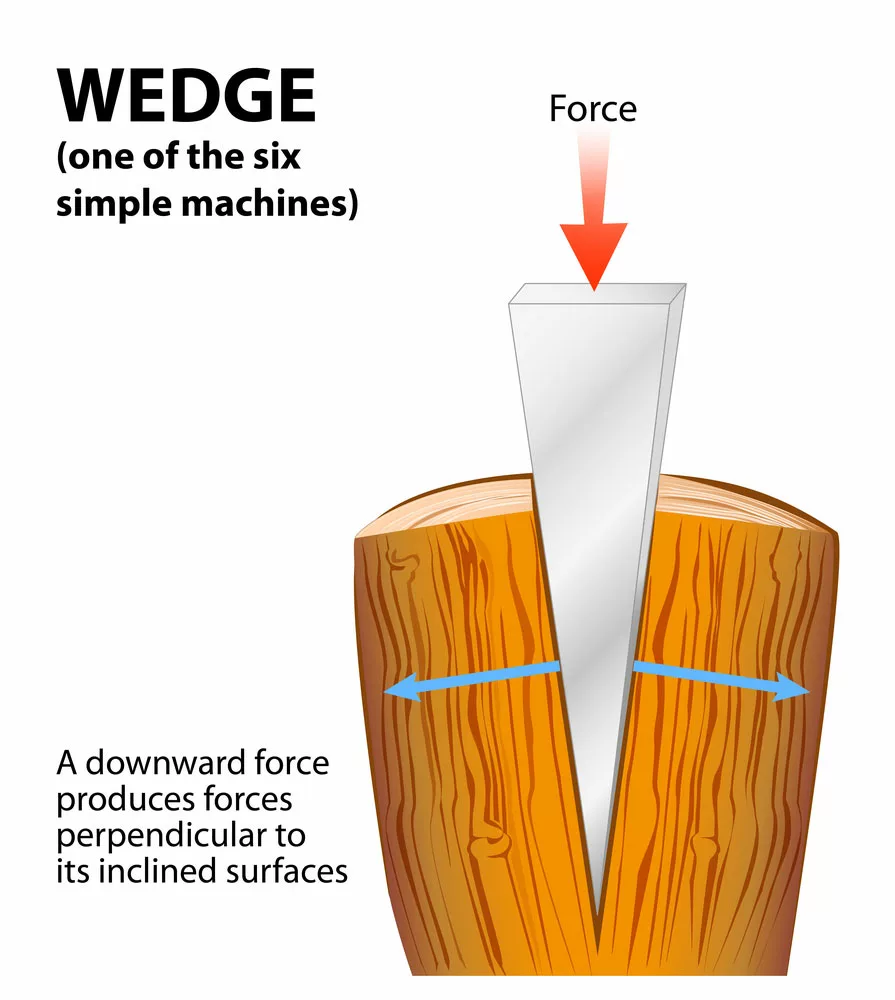
(Schematic of axe wedge)
Method 2: Dip the Loose Head into the Linseed Oil Bucket
Linseed oil swells wood. So, making your axe handle and wedge fit perfectly into the head’s hole is a good option. In other words, it can stop your axe head from loosening.
Here’s what you should do:
- Apply some linseed oil around the axe’s head hole. Alternatively, you can soak the head inside a bucket of linseed oil.
- Wait for 24 to 36 hours before cleaning off any oil residue. If you soaked the head, bring it out now and dry it.
- Allow for another 4 hours at least for the head to dry thoroughly.
- Finally, insert the axe handle – and a wedge if available – into the head hole.
The linseed oil will harden the wood to stick firmly to the axe head.
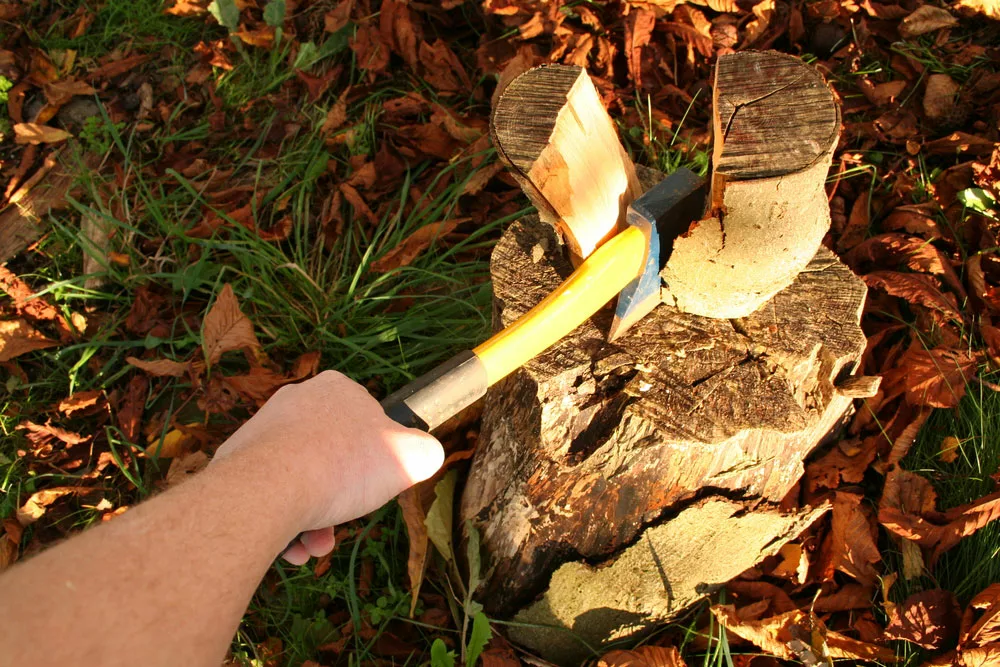
(The axe cleaved the wood)
Method 3: Hammer the Nail
A third option to fix a loose axe head is to hammer in nails. In particular, three to four nails should do the job. It’s a quick and simple fix, yet worthwhile.
First, get sturdy wood nails. Then, hammer them through the head hole into the middle of the handle.
The nails won’t bind the head and handle together. Of course not; the head is steel. Instead, they’ll spread out the wooden handle so it gets a tighter grip on the axe head. A tighter grip means the head is less likely to fall off.

(Hammer and nail for axe handle)
Method 4: Soak the Axe Head in the Water
Like linseed oil, water can harden the wood. When water gets into the wood, it softens it, causing it to swell and expand. And when the wood dries, it maintains its swelled, expanded shape.
However, you don’t want to swell the entire handle. Your target is the area that goes through the head’s hole. So, only place the axe head inside a bucket of water.
You can do this with the handle attached by keeping the axe upside down.
Method 5: Rehandle the Axe
A loose handle means a loose head. As a result, you can solve the problem by rehandling the axe. In simpler words, you can get a replacement handle.
Rehandling an axe is not always easy; getting a different handle to fit your head perfectly is challenging. Most often than not, you’ll still need to shape the new handle after getting it.
Hence, you may need other supplies like a new wedge kit, glue, and sandpaper.
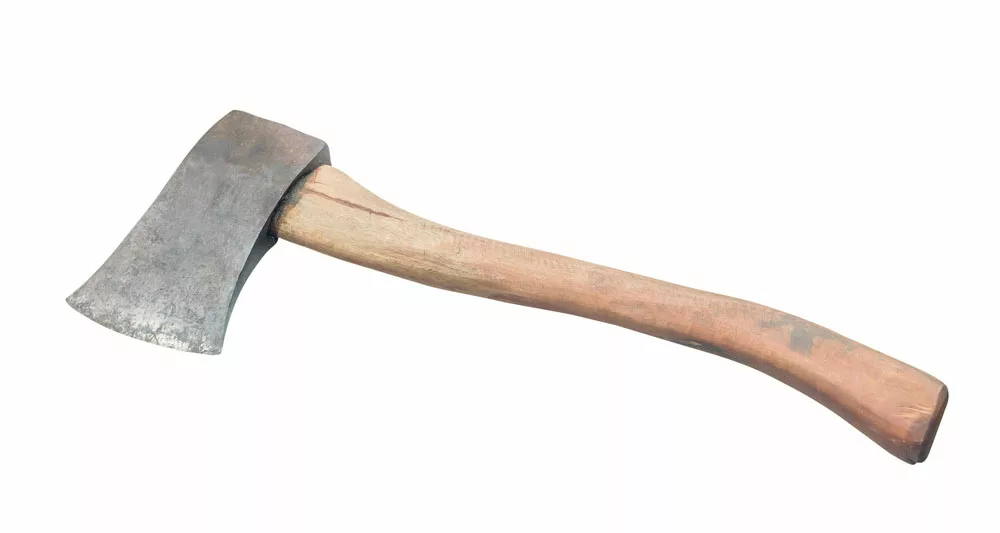
(An axe with a brown handle)
Tips To Keep Your Axe Head From Loosening
You can stop your axe head from loosening when you follow the below tips:
- Storing Your Axe Properly
Proper storage increases the shelf life of any tool. And it’s most important for tools with wooden parts like axes. Without proper storage, causes like temperature and humidity will weaken the axe handle over time, causing the head to loosen.
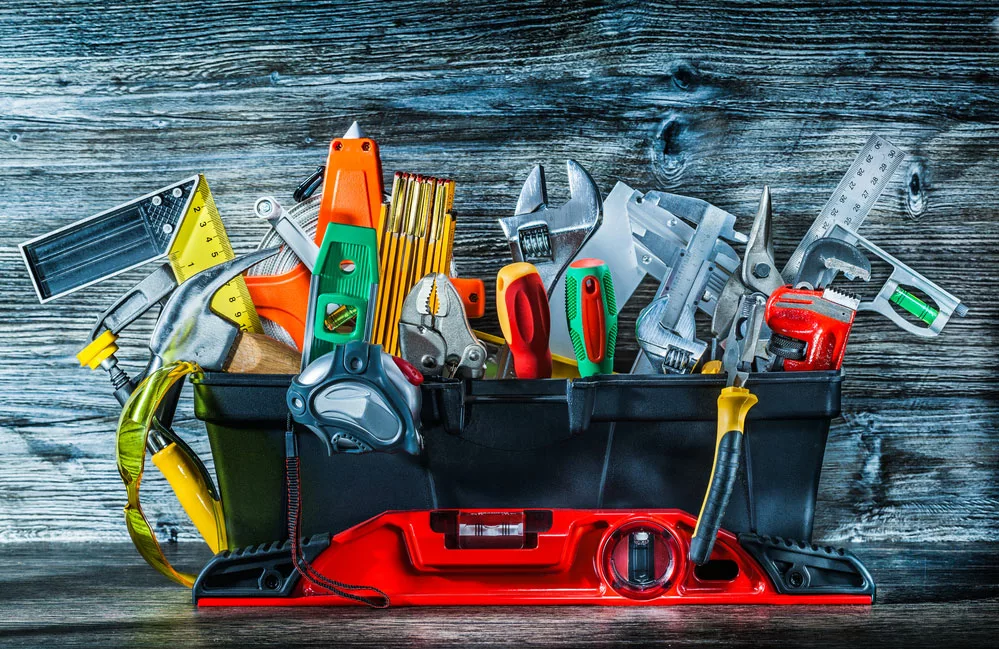
(Toolbox for storing axe and other tools)
- Regularly Oiling The Axe Head
As explained, oiling your axe head will harden and tighten the handle. You don’t have to wait until your axe head is loose before you do this.
From time to time, run the area around the head hole with linseed or similar oils. Besides stopping the head from loosening, it’ll also prevent rust.
Frequently Asked Questions
Before concluding, look at some frequently asked questions on axe heads.
How Long Does an Axe Head Last?
An axe head can last until infinity. It’s made of durable, thick steel that doesn’t crack. So long as you sharpen it when dull and store it properly, you can use it for a lifetime.
What Are Other Common Axe Problems?
Common problems you encounter with an axe include:
- Shrinking or Splitting Handle
Since the axe handle is wood, it’ll shrink if left in an unfriendly environment. Also, it could split when it encounters harder materials. Proper storage and maintenance will help avoid this.
- Rusting Heads
The axe head is steel – and steel rusts – so you should expect this. Rust will occur if your axe head constantly comes in contact with moisture. You can prevent it by properly cleaning and storing the head after each use.
- Blunt Blades
Besides rusting, your axe head will become blunt with use. It’s unavoidable but, thankfully, easy to remedy. All you need to do is sharpen the head blade, which is doable with a file.
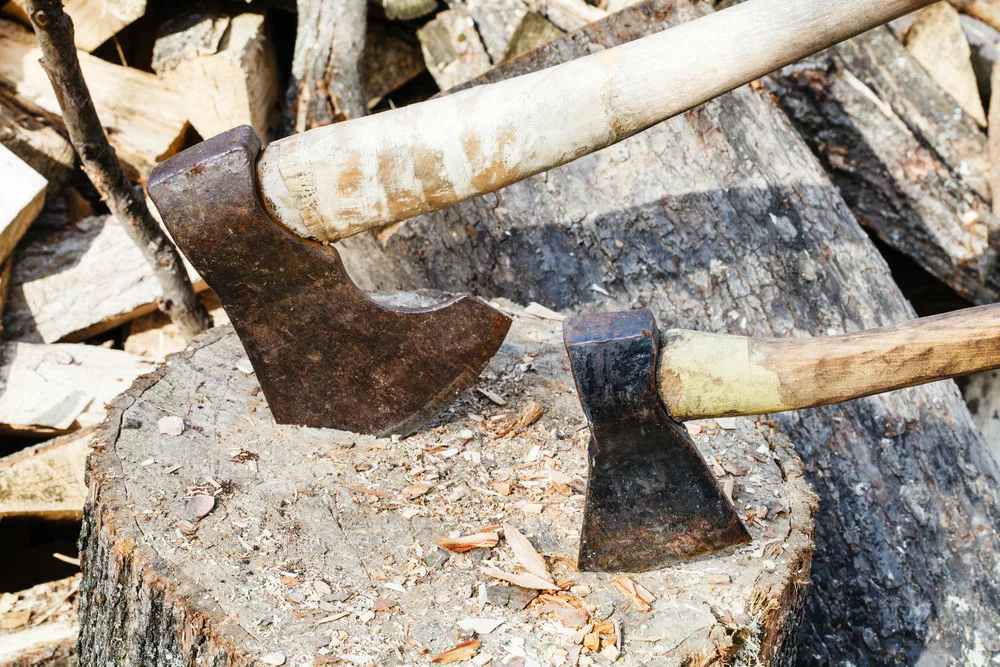
(Rusty axe)
Conclusion
Different factors contribute to a loose head. However, it mainly involves a loose handle. To fix the issue, insert a sturdy wedge or rehandle the axe. Alternatively, you can soak the head in linseed oil or water to harden the wooden handle.
Knowing how to fix a loose axe head is good, but knowing how to prevent it is better. So, keep the tips on stopping an axe head from loosening in mind.
